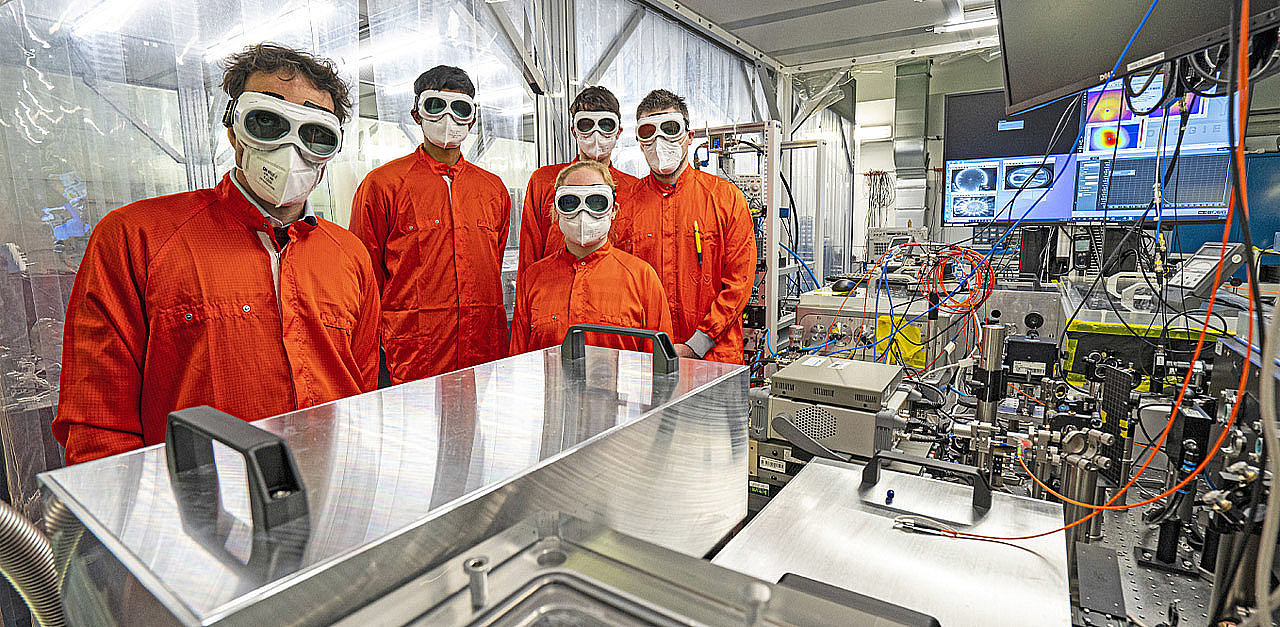Extensive efforts by the Max Planck Institute for Quantum Optics (MPQ), the Ludwig-Maximilians-Universität München (LMU Munich) and the Center for Molecular Fingerprinting Research (CMF) teams are together advancing the frontiers of laser science over the last years. But we are turning on a new page here: The time has come to finally apply and evaluate the latest technological advances for its possible applications in medicine. And the quest to evaluate whether Infrasampler 1.5 technology will level up in vitro cancer diagnostics is on!
In a joint effort, scientists from the MPQ, LMU and CMF have developed the Infrasampler 1.5 – a new device for field-resolved molecular fingerprinting of human blood samples. Proudly and excitingly – the first pilot application on human blood serum just started. Here the performance of the new laser-based spectrometer will be evaluated to identify molecular fingerprints specific to prostate, breast and lung cancer.
The Infrasampler 1.5 uses ultrafast high-power lasers from the LMU research laboratories to create mid-infrared pulses and excite the molecules in the human, blood-based samples. Imagine the event like a mallet hitting a gong: With the ultra-sensitive field-resolved detection the new capacity to listen to the ringing that follows the striking of the gong is available. And the recorded echo-like signatures from human serum are characteristic to the molecular composition of the sample. Now the quest is to figure out whether these signals from human samples are corelating with human physiologies and diseases like cancer.
The metrology has been developed by the team around Dr. Ioachim Pupeza, group leader of the field-resolved metrology development, who has teamed up with the group around Dr. Alexander Weigel, chief laser scientist. They are grateful for contributions of Philip Jacob, Phd student, Dr. Christina Hofer, non-linear optics expert, along with the support of Dr. Wolfgang Schweinberger, senior scientist. Developing this new technology was a truly multi-disciplinary endeavor and required scientists and experts from fields as diverse as laser physics, nonlinear optics, computer science, data analysis and bioengineering to work together.
But these are not all. For the whole endeavor even more professionals are intricately networking here. On the computer scientist side, Patrik Karandušovský is developing the algorithms and control programs for the system, while Dr. Maximilian Högner, postdoctoral scientist, developed data analysis procedures. And getting to molecular level, the broadband infrared diagnostics (BIRD) team around Dr. Mihaela Zigman is enabling the biological and even real-world clinical settings to be evaluated. It is the expertise of Dr. Michael Trubetskov, Dr. Kosmas Kepesidis, Dr. Marinus Huber, Dr. Frank Fleischmann, Eric Grießinger that is after the molecular fingerprint echos, which they are correlating with the medical parameters, managed by the clinical study team around Jacqueline Hermann.
What is new within the Infrasampler 1.5 technology? Compared to previous similar instruments, Infrasampler 1.5 is now equipped with a new ultra-rapid scanning technology, which facilitates recording up to 3000 measurement scans per second. A new milestone in the field. The vision is to use the Infrasampler technology as a standardized technique for future medical applications, and the launch of the first Infrasampler 1.5 measurements is another important milestone on the way.
The path for shaping the future of healthcare may be challenging, with many multi-level problems to be tackled. Even so, the cross-disciplinary strength and the power of great minds from LMU, CMF and MPQ acting in such unison while pursuing the mission may turn out imperious. For the future of technologies involved, as well as their applications.

